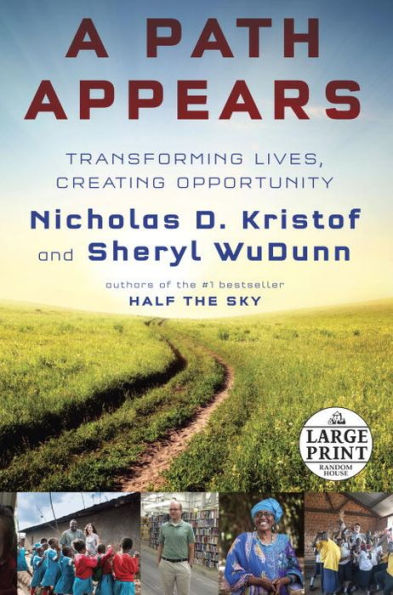Equal in urgency and compassion to Half the Sky, this galvanizing new book from the acclaimed husband-and-wife team is even more ambitious in scale: nothing less than a deep examination of people who are making the world a better place, and the myriad ways we can support them, whether with a donation of five dollars or five million, an inkling to help or a useful skill to deploy. With scrupulous research and on-the-ground reporting, the authors assay the art and science of giving-determining the current most successful local and global aid initiatives (on issues from education to inner-city violence to disease prevention), evaluating the efficiency and impact of specific approaches and charities, as well as fund-raising. Most compellingly, perhaps, they show us how particular people have made a difference, and offer practical advice on how best each of us can give and what we can personally derive from doing so.
Equal in urgency and compassion to Half the Sky, this galvanizing new book from the acclaimed husband-and-wife team is even more ambitious in scale: nothing less than a deep examination of people who are making the world a better place, and the myriad ways we can support them, whether with a donation of five dollars or five million, an inkling to help or a useful skill to deploy. With scrupulous research and on-the-ground reporting, the authors assay the art and science of giving-determining the current most successful local and global aid initiatives (on issues from education to inner-city violence to disease prevention), evaluating the efficiency and impact of specific approaches and charities, as well as fund-raising. Most compellingly, perhaps, they show us how particular people have made a difference, and offer practical advice on how best each of us can give and what we can personally derive from doing so.

A Path Appears: Transforming Lives, Creating Opportunity
656
A Path Appears: Transforming Lives, Creating Opportunity
656Paperback(Large Print)
Related collections and offers

Product Details
| ISBN-13: | 9780804194549 |
|---|---|
| Publisher: | Diversified Publishing |
| Publication date: | 09/23/2014 |
| Edition description: | Large Print |
| Pages: | 656 |
| Product dimensions: | 6.10(w) x 9.20(h) x 1.50(d) |
About the Author
Customer Reviews
Explore More Items
It's not just the upcoming O.W.L.
This undated weekly planner notepad features iconic anime style imagery of beloved Harry Potter and
Winner of the Pulitzer Prize and
Controla cómo disfrutas tu día a día y transforma tu hogar en un refugio de calma con esta bella
Marie Kondo te ayudará a poner en orden tu casa de una vez por todas con su método inspirador paso a paso. La clave es hacer frente a tu casa en el orden correcto, para mantener
In his boldly imagined first novel, Ta-Nehisi Coates, the National Book Award–winning author of Between the World and Me, brings home the most intimate evil of enslavement: the cleaving and
